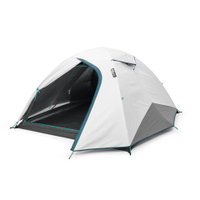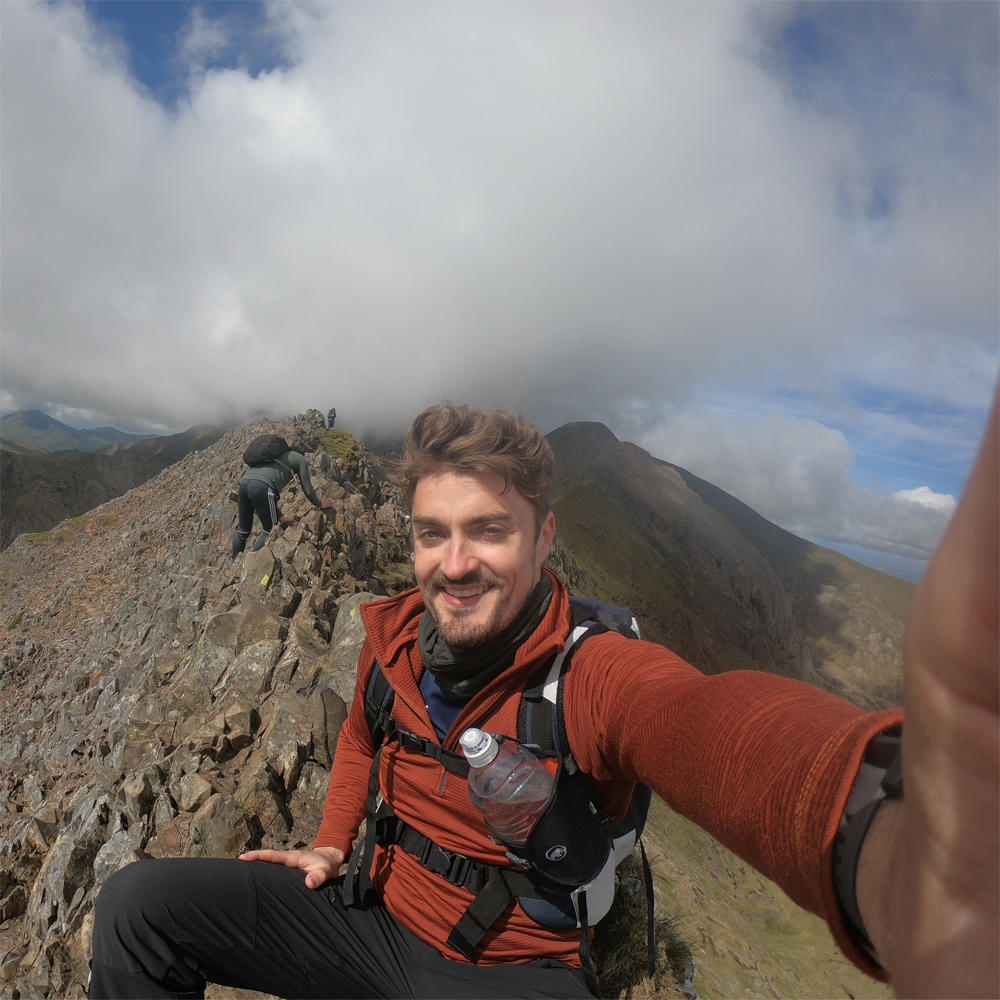I pushed budget Decathlon camping gear to its limits – and it was a disaster
How far can you push budget three-season camping gear from Decathlon? To find out, we put a budget tent, sleeping bag and mattress to the test in some truly miserable weather
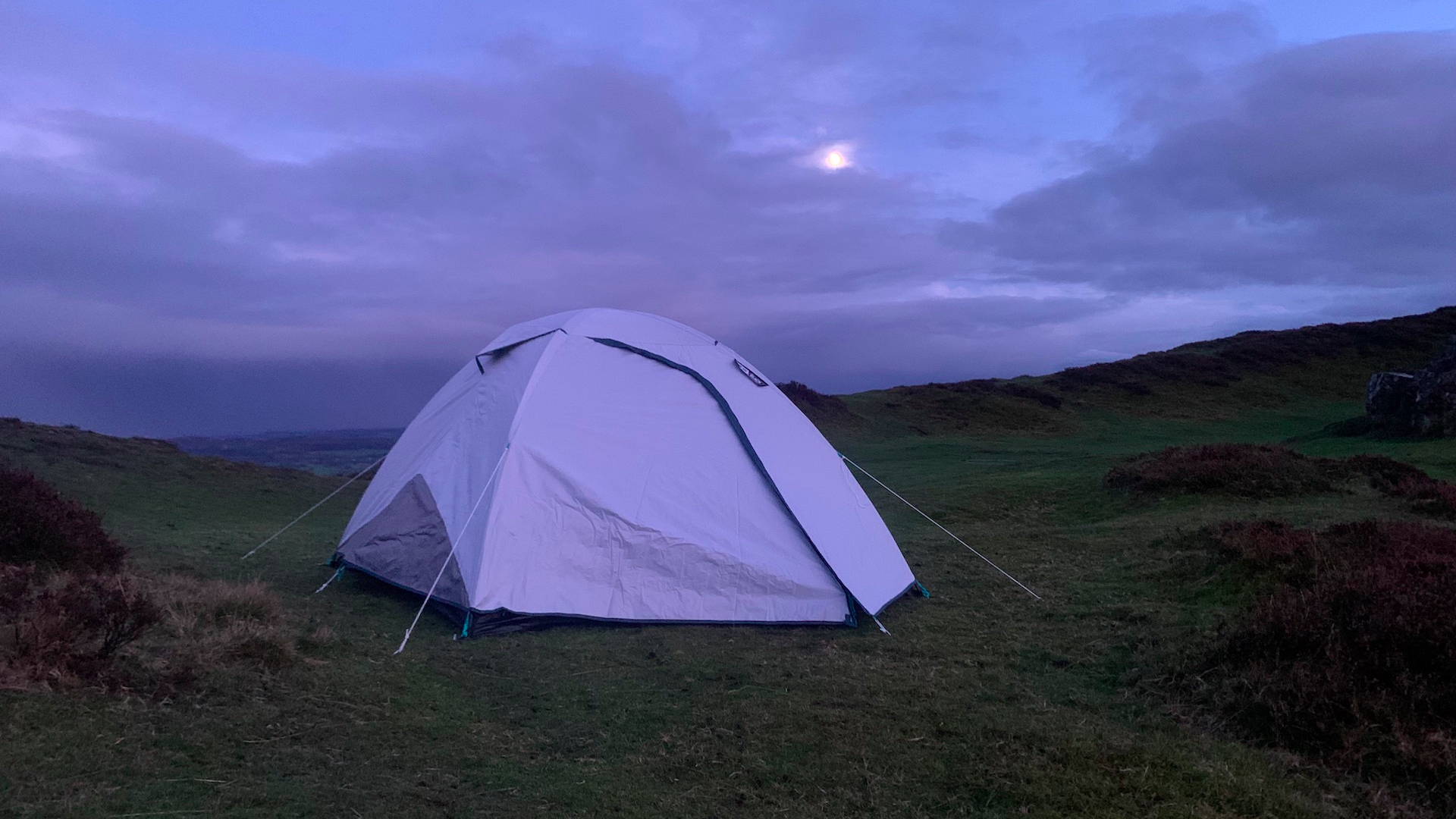
Winter in the UK can be a cruel time of year. Howling winds, pouring rain and freezing temperatures can make for an uncomfortable night outdoors – unless you have the right kit. But, with proper winter gear being notoriously pricey, I wanted to find out how far you can push a budget three-season system from Decathlon and still comfortably and safely camp outdoors. That’s why, just after Halloween, as the clocks went back and the nights got longer, I took some gear up to a blustery hilltop for a good old fashioned gear test.
Camping Tent MH100 3-P Fresh&Black: £64.99 at Decathlon
This is the very cheap tent we took up Caer Caradoc. It's a freestanding design, which means you can pick it up and shift it after it's been pitched, though that won't necessarily help much depending on the weather.
The gear
The gear that I’d be testing on this trip was the Quechua three-person MH100 Fresh & Black tent, the Forclaz MT500 inflatable mattress, and the MT500 -5℃ degree sleeping bag. Coming in at a total cost of £189.99, this felt like a robust and reliable sleep system, and I was impressed with the feel and quality of the gear from the moment it arrived. In fact, I was quietly confident that it could survive a night at elevation during some seriously inclement winter-like weather.
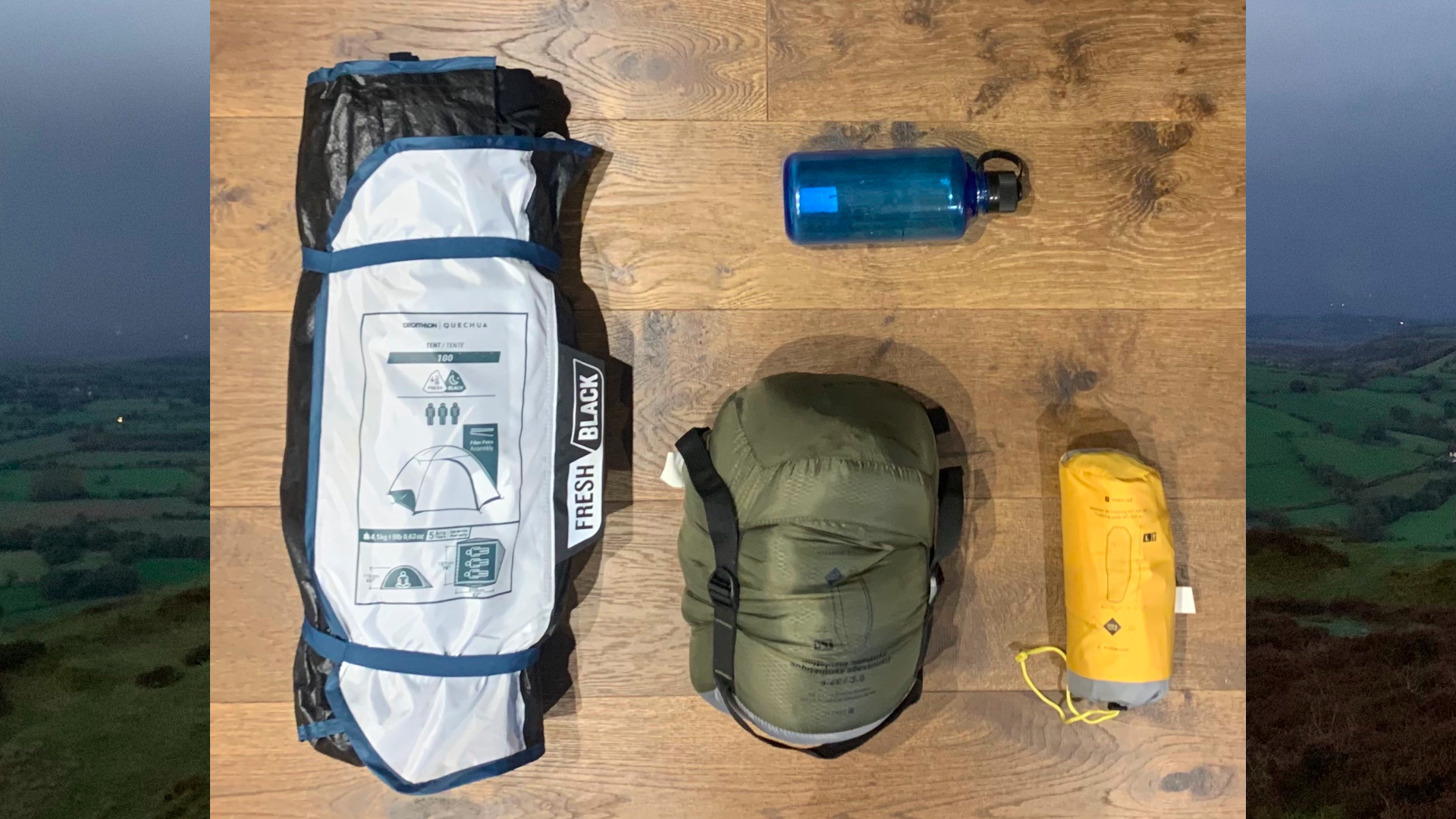
The conditions
To truly put the kit through its paces, I wanted to head somewhere prone to strong gusts, rain and colder temperatures. But, as I’d be testing gear that’s built for calmer conditions, it also had to be a spot I was very familiar with. For safety reasons, I wanted to go somewhere that I knew like the back of my hand; a place I could confidently bug out of without needing to check maps or navigate if things were to go pear shaped at 3am. Luckily, I knew just the place: Caer Caradoc, a highly-exposed hilltop that makes for one of the most aggressive-looking landmarks in the Shropshire Hills.
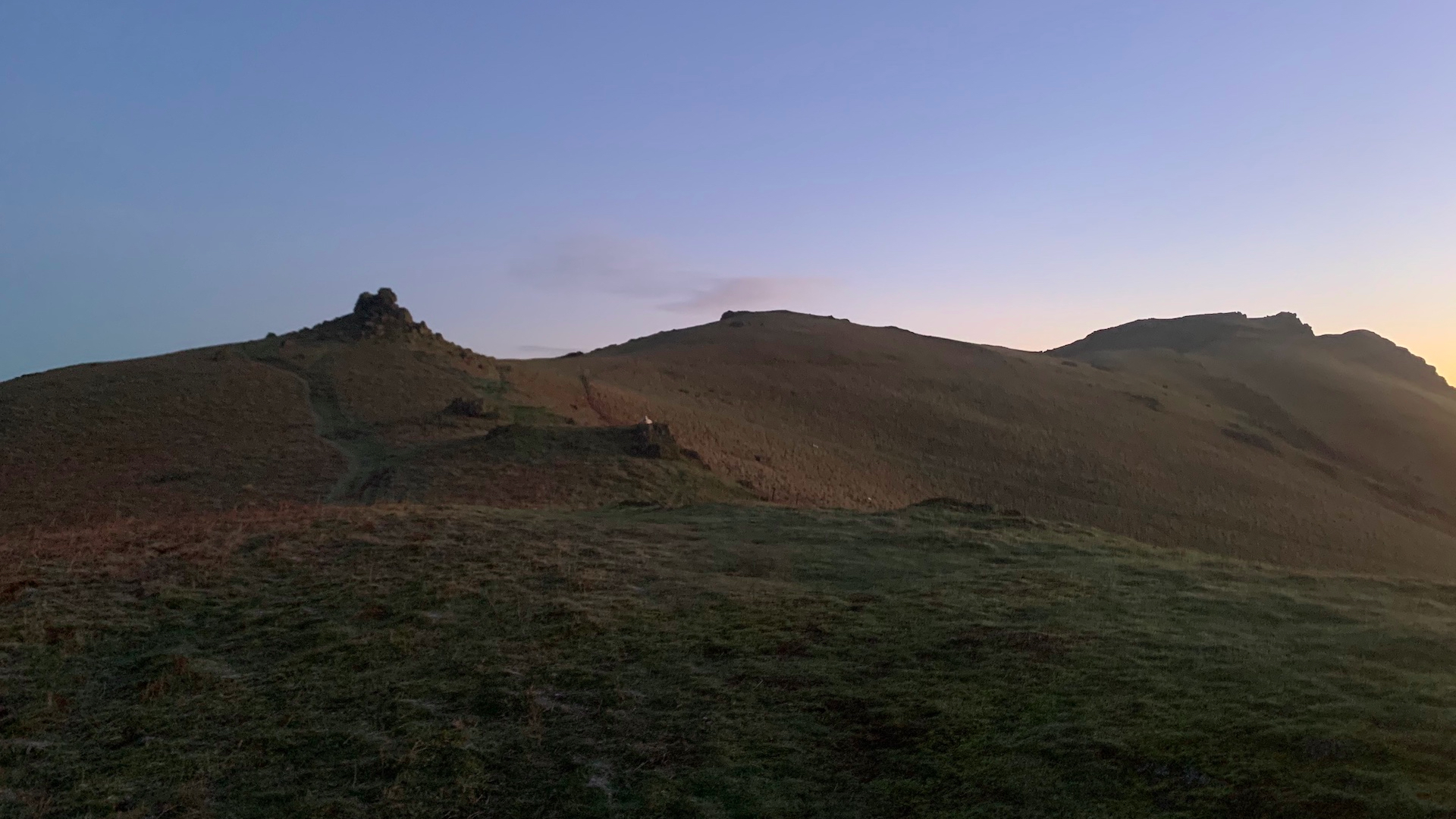
The test
Watching the weather through early November, I was thrilled to see that wind, rain and chilly temperatures were predicted the whole week. And with a short front of truly atrocious weather set to roll in from Thursday morning to Friday afternoon, I jumped at the chance to get out, excited to camp in sustained wind and rain, and to see how the gear would perform in temperatures down to about 4 or 5 °C.
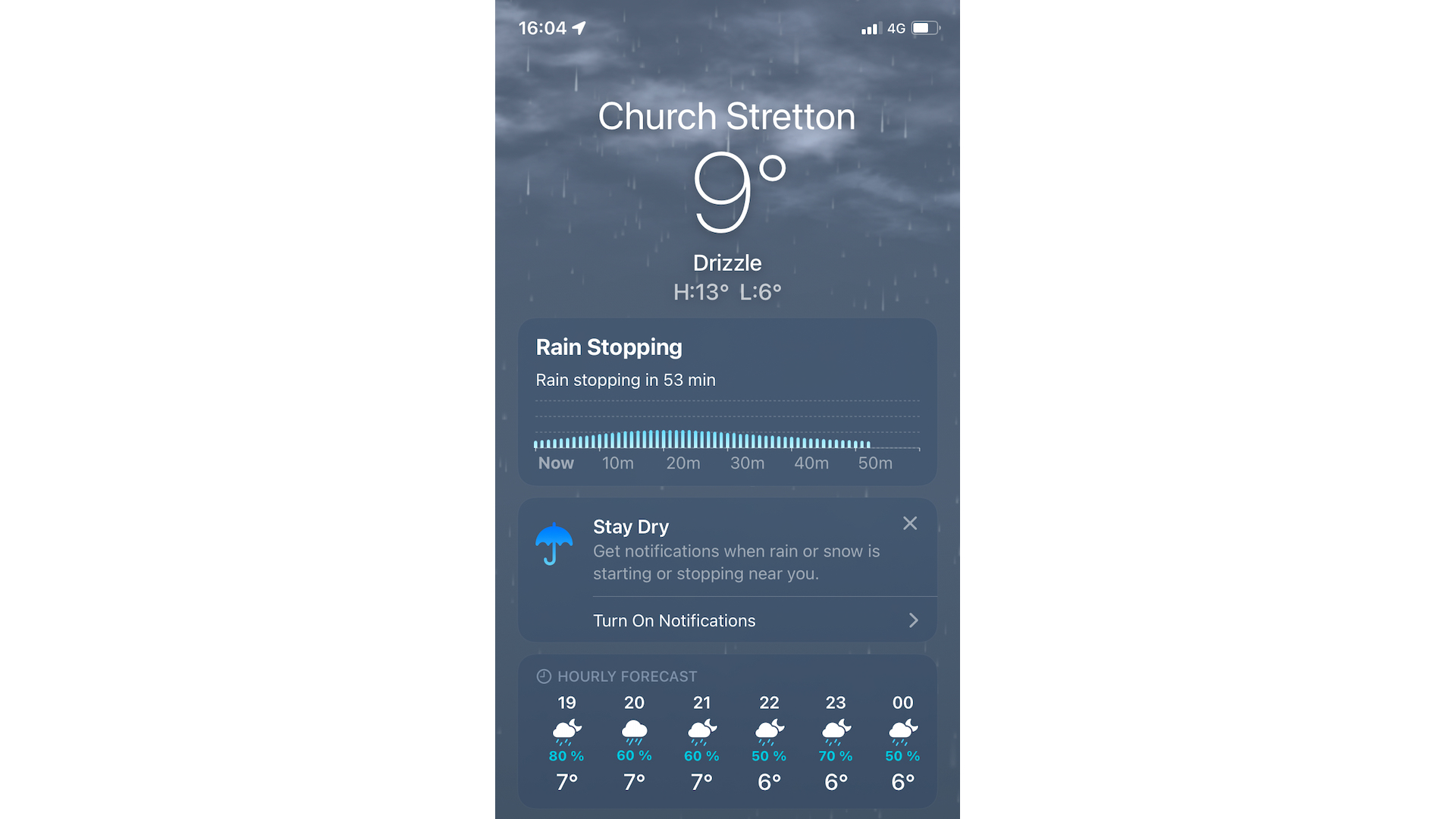
As the temperatures dropped, I loaded up my 65-liter backpack with all the essentials and stashed an extra sleeping bag, a bivvy bag and a hard foam mat just in case. Then I added the Decathlon kit: the Forclaz sleeping bag and the inflatable mattress both went in first, and I was impressed at how small I was able to pack them down. I managed to compress the sleeping bag down to a size similar to my OEX Evolution Leviathan 900, a four-season down bag that costs almost four times the price of the Forclaz MT500 (and isn’t substantially warmer in my opinion). The Forclaz MT500 inflatable pad went in next, and as this could be folded down to something comparable to the Thermarest NeoAir XLite (though, granted, this comes with a 4.2 R-value) or the Alpkit Cloud Base, I could practically stash this anywhere.
Then it was onto the tent, which was quite the beast. Granted, the version I was testing was the 3-person model, so a larger pack size should be expected. But this tent was the biggest I’d ever carried. No matter what I tried, there was no way I was going to be able to store it inside my pack, so I resorted to lashing it to the outside.
How the gear performed in the wild
Setting off at about 3.30pm, the sun was already starting to set when I locked the car. Donned in full rain gear, including jacket, trousers and mittens, I felt like I was heading out on the adventure of a lifetime. And for good reason – the second I started walking, the rain kicked into overdrive, so much so that I could actually hear it driving into the tent strapped to the outside of my backpack. Perfect!
Advnture Newsletter
All the latest inspiration, tips and guides to help you plan your next Advnture!
The climb up Caer Caradoc isn’t a long one, and I was at my chosen spot in around 90 minutes. The rain hadn’t let up the whole time, however, and I could feel it start to soak its way through my multiple layers of Gore-Tex. To get out of the rain, I decided to erect the 3-season tent as quickly as possible. So I pulled it out of its bag, clipped the poles together and got to work trying to figure out how best to go about it. And to the Quechua’s credit, it went up easily. I didn’t need to even peek at the instructions: colour-coded poles simply criss-cross over the inner to which you then lash the fly. Unfortunately, however, this presented me with my first problem: In the time it had taken to erect the structure and cover everything over with the waterproof fly, rain had flooded the inside of the tent. Luckily, I was able to shake much of this out before pegging it down due to the tent’s free-standing structure, though the tent floor would remain damp inside for the rest of the night.

As the rain continued to fall, I pegged out everything as best as I could, kicked off my soggy boots and climbed inside. Which is when I encountered another problem: the size of the vestibule. The Quechua Fresh&Black’s porch is the same length as my size 9 boots, which is much too small to be a usable space. I couldn’t even get my empty pack in there. In the summer months when there’s less rain, this might not be an issue: the 3-person tent is more than big enough for one person and kit. But in my case, it had pretty disastrous consequences. I had to toss all of my soaking wet gear into the inside of my tent – a space I was desperately trying to dry out. This resulted in even more water pooling in every recess across the bathtub floor.
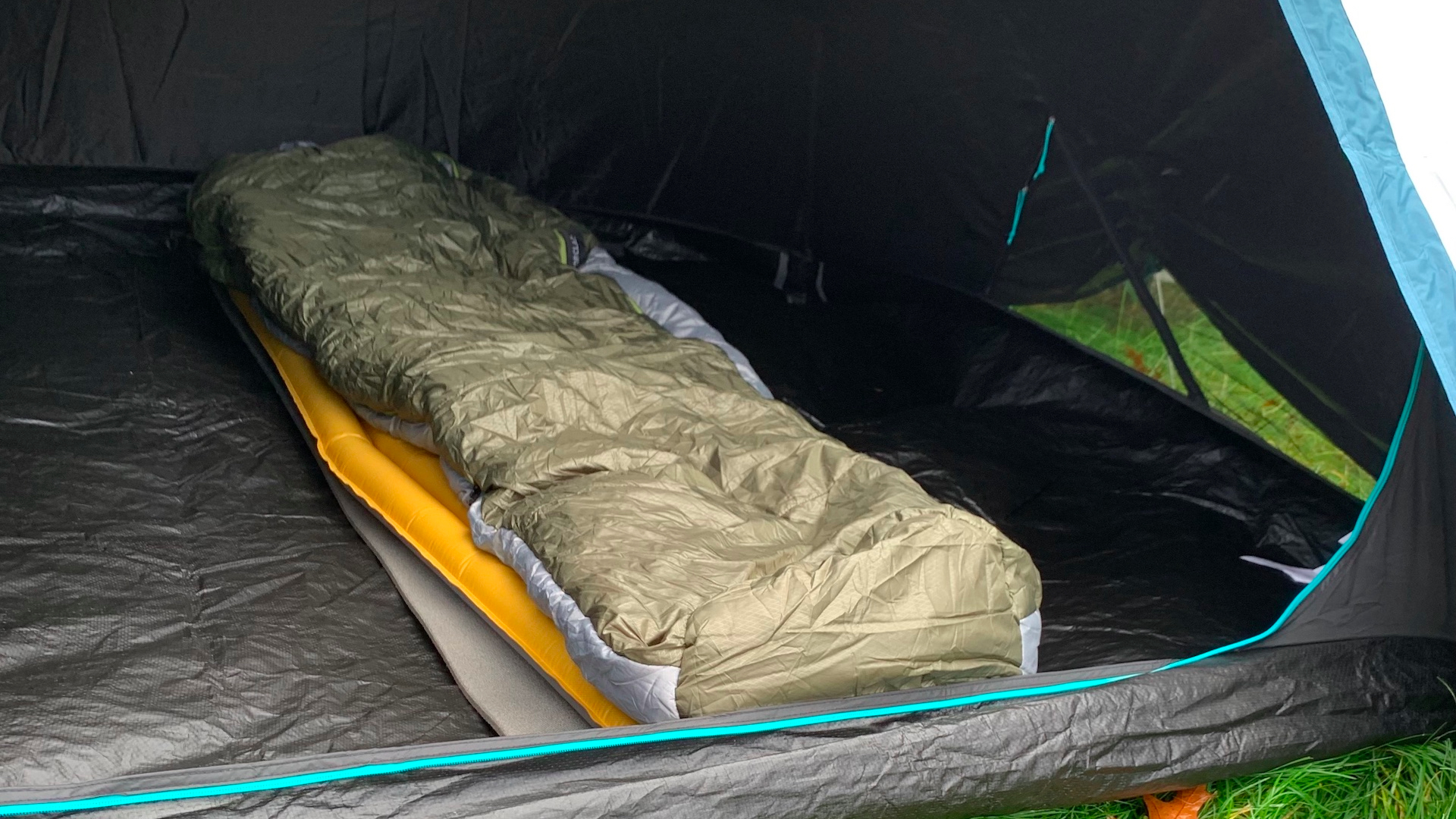
Regardless, I persevered and pulled out the inflatable sleeping pad. I blew this up in 10 short breaths and then draped the Forclaz MT500 sleeping bag over the top of it. At this point, the wind changed direction and revealed another of this tent’s flaws: the door on the vestibule opens up over the inner. With the wind now driving into my tent, rain was being blown all over the inside. Water on water on water. To solve this problem, I battened down the hatches and sealed the door shut. But due to the Fresh&Black’s special fly which prevents any light getting through (in order to keep the temperature stable inside), I was suddenly in near complete darkness. It was still light outside, yet here I was scrunched up atop my little sleeping pad island playing ‘The Floor is Lava’ with the inside of my tent. Oh, and my only source of light was my headlamp.
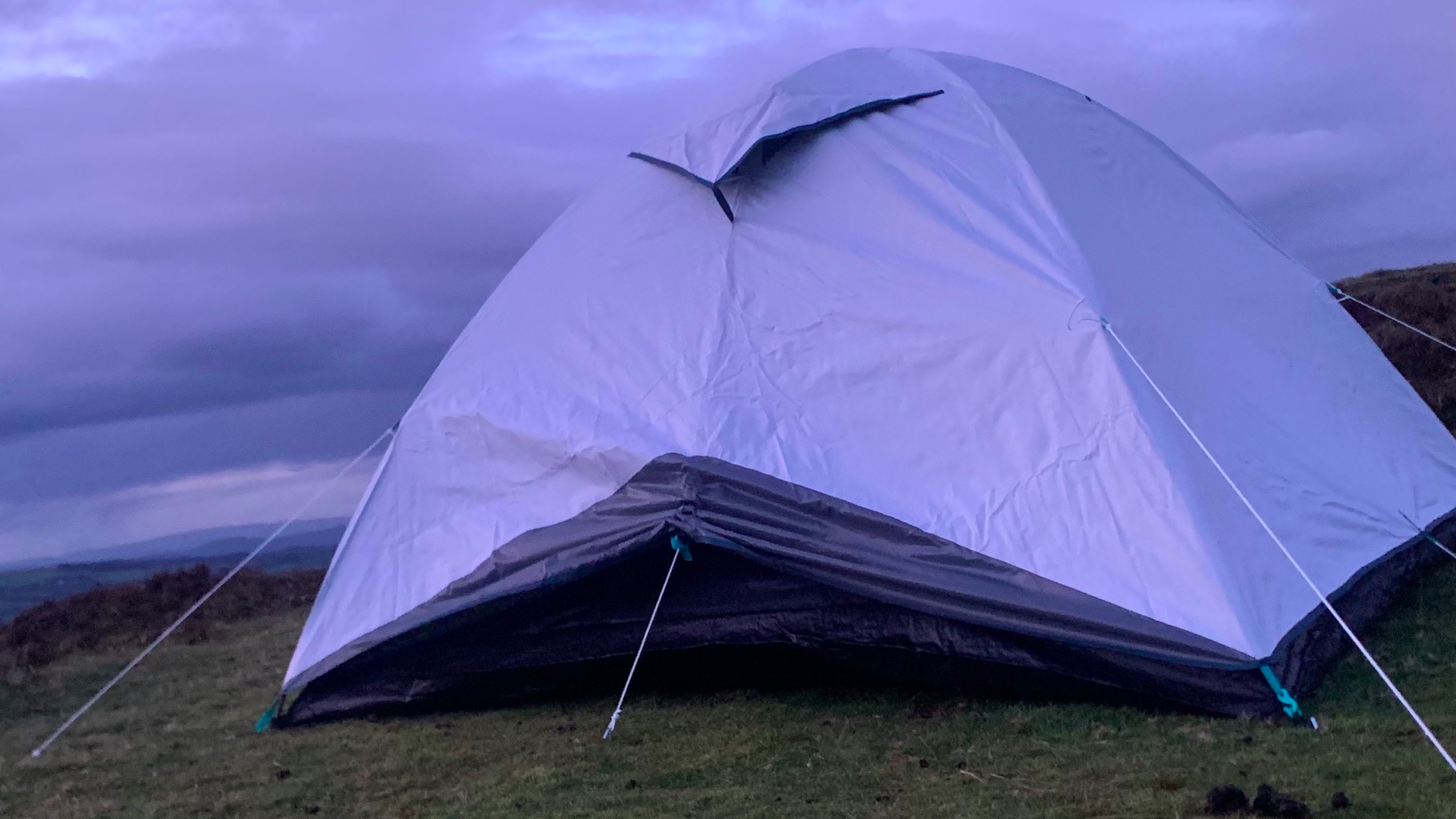
A chilly night
Through the night, things didn’t improve. The wet bathtub floor meant that I tried to stay on top of my dry little island as much as possible, though that didn’t stop everything from eventually getting wet. Luckily, however, this was where the Forclaz MT500 sleeping bag and the MT500 trekking mattress really came into their own. Due to the synthetic insulation in the bag, I didn’t feel any cold spots despite bits of it getting wet. And the pad kept me comfortable and supported all night. For extra warmth, I did wear some merino wool baselayers inside the bag, and I popped the hardfoam mat under the sleeping pad some time after midnight. The Forclaz MT500 trekking mattress has no R-value, after all, so it’s unfair to expect that it alone will keep you warm in the winter.
As soon as 4:30am rolled round, I considered myself as having survived a night on the hilltop, so climbed out of the tent and packed everything down. This went surprisingly quickly, and everything was back in its rightful place in my backpack in about 15 minutes. Getting back to the car as the sun started to rise in the distance, I was glad that was over. I set out to test 3-season kit in 4-season weather, and I felt confident I’d succeeded. Thankfully I’d never have to do that again.
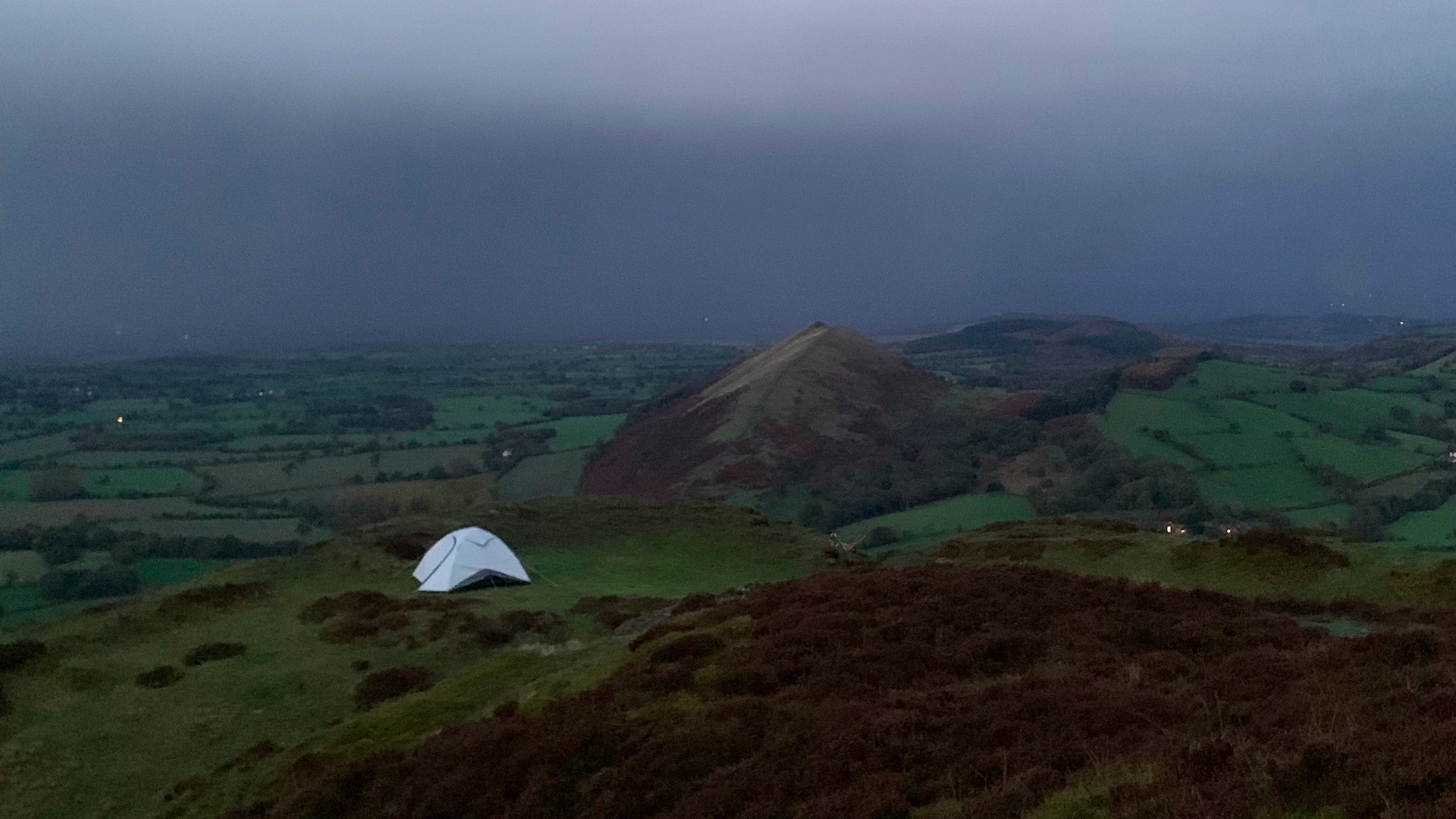
My verdict
All in all, I was very impressed with the sleeping bag and pad. I’m confident that both could be used through the winter in the UK, as long as you combine the mattress with a hard foam pad and wear base layers or thicker clothes in the bag. I also think they both represent excellent value for money. Take the bag, for example: for £79.99, you get a warm, robust and reliable sleeping bag that will see you through many seasons. It comes with a large baffle around the shoulders to keep out drafts, and the material is soft and cosy against your skin. When it comes to the pad, the manufacturing is also well considered: It blows up in around 10 breaths, is really easy to deflate and roll away, and packs down so small that you can use it for a variety of different activities, such as hiking, fastpacking or bikepacking. All for £44.99.
Unfortunately, the tent is a different story. The Quechua MH100 Fresh&Black is absolutely not suitable for UK four-season weather. It didn’t cope well in strong winds, heavy rain or cold temperatures. And while those aren’t the conditions it was built for, I was still disappointed by just how badly it did in all three.
Overall, this experience taught me that tents that you pitch inner-first are an awful choice for 4-season camping, unless you’re a duck. I also learned that dome tents with a small vestibule present other problems when the weather isn’t calm and dry – namely the necessity to bring the outside inside. Does this mean that I think no 3-season tents can be used 4-season? No. It means tents with a similar design and spec to the Decathlon Quechua MH100 Fresh&Black should be avoided through the winter. I still think there are 3-season tents out there that can be safely used in 4-season conditions. And now I’ve found a budget bag and pad I’m happy with, I’m excited about continuing the hunt for a durable 3-season tent I’d be equally happy to use in the winter.
- Best one-person tents: for backpacking and solo adventures
Growing up just south of the glorious Brecon Beacons National Park, Craig spent his childhood walking uphill. As he got older, the hills got bigger, and his passion for spending quality time in the great outdoors only grew - falling in love with wild camping, long-distance hiking, bikepacking and fastpacking. Having recently returned to the UK after almost a decade in Germany, he now focuses on regular micro-adventures in nearby Snowdonia and the Brecon Beacons, as well as frequent trips to the Alps and beyond. You can follow his adventures over on komoot.
